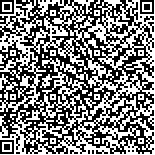下载中心
优秀审稿专家
优秀论文
相关链接
摘要

高光谱红外传感器高精度在轨光谱定标是红外遥感定量反演及应用的重要前提。本文针对大气红外探测仪AIRS(Atmospheric Infrared Sounder)的观测数据,分析传感器等效入瞳亮温与大气透过率光谱中的吸收线特征,基于NODD和包络线去除的光谱归一化处理,融合多种光谱匹配算法构建非线性代价函数,提出了一种无需地表实测数据支持的高光谱红外传感器光谱定标方法。与JPL官方定标结果相比,中心频率定标精度优于0.0154 cm-1,中心频率及半峰全宽的偏移量分别在±0.02 cm-1及±0.1 cm-1以内,相对偏移量分别在0.2%—1.9%与0.5%—12.0%。最后,本文详细分析了大气上行辐射、下垫面类型及空间采样点数量对定标算法的影响。
During the entire operating life of a spaceborne sensor, the sensor’s spectral capability would be affected by optical device displacement, mechanical vibration, space environmental rays, etc. As a means to determine the spectral performance parameters of infrared hyperspectral sensors, high precision on-orbit spectral calibration is an essential prerequisite for quantitative remote sensing retrieval and application. Therefore, a fast and efficient spectral calibration method for hyperspectral mid-infrared and thermal infrared sensors needs to be constructed.In this paper, we established a spectral calibration method to retrieve the array centroid and Full Width at Half Maximum (FWHM) simultaneously in the absence of surface measurements. The method is mainly based on the atmospheric absorption line’s characteristics of the on-orbit effective brightness temperature (without the influence of atmospheric upward radiance) and the atmospheric transmittance spectrum, meanwhile, the spectral performance parameters were calibrated using a cost function composed of multiple spectrum matching algorithms. Before spectrum matching, it is necessary to perform Normalized Optical Depth Derivative (NODD) and continuum removal on the spectrum data.The Atmospheric Infrared Sounder (AIRS) spectral calibration results shown that the calibration accuracy of centroid frequency is better than 0.0154 cm-1, besides, the shift of centroid and FWHM are within ±0.02 cm-1 and ±0.1 cm-1, respectively. In other words, the centroid frequency and FWHM fluctuate within the 0.2%—1.9% and 0.5%—12.0% mean value of an array declared FWHM.This study demonstrated the utility of this method which can determine the mid-infrared and thermal infrared array spectral status change with high accuracy and stability. At the same time, we analyzed the sensitivity of this calibration method to atmospheric upward radiance, surface type, and the number of sampling points. The results confirmed that the influence of surface types on calibration accuracy is tolerable. Moreover, when the upward atmospheric radiance is accurately eliminated and the number of spatial sampling points is greater than 20, the spectral calibration result is reliable.

